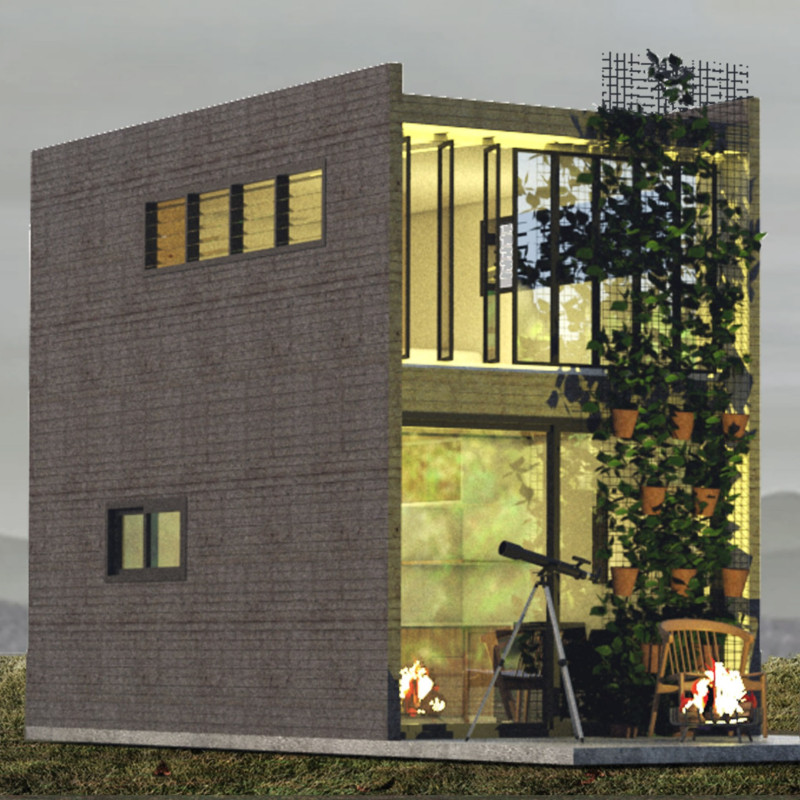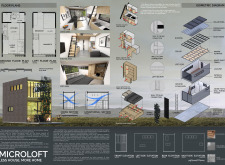5 key facts about this project
Optimizing spatial layout is critical to the project’s function. The design incorporates two levels: a ground floor with an open living area, kitchen, bedroom, and bathroom, and a loft level providing additional sleeping and workspace functionality. This arrangement allows for flexibility in usage while maintaining a cohesive flow between different spaces. Multi-functional furniture, such as a pull-out dining table and integrated storage solutions, exemplifies the efficient use of available space.
The Microloft distinguishes itself from typical housing projects through its innovative approach to material selection and sustainability. The integration of marine plywood for cabinetry offers durability alongside moisture resistance, while polished concrete flooring contributes to a modern aesthetic and structural integrity. The use of locally sourced adobe textures for wall finishes enhances sustainability and provides a natural warmth to the interior. Additionally, solar panels on the roof ensure energy self-sufficiency, further supporting environmentally responsible living.
Another unique aspect of the Microloft design is the implementation of vertical jalousies, facilitating natural ventilation while allowing occupant control over light and airflow. This design choice reduces energy dependence on cooling systems and highlights the project's commitment to sustainability. The seamless connection between indoor and outdoor spaces is achieved through strategically placed windows and landscaping that encourages interaction with nature, further enhancing the living experience.
In summary, the Microloft project serves as a model for addressing urban housing needs through thoughtful architectural design. It explores space utilization, functional adaptability, and environmentally conscious practices. For those interested in understanding the intricacies of this project, including architectural plans, sections, and ideas, a detailed presentation invites further exploration and insight into its design principles.























